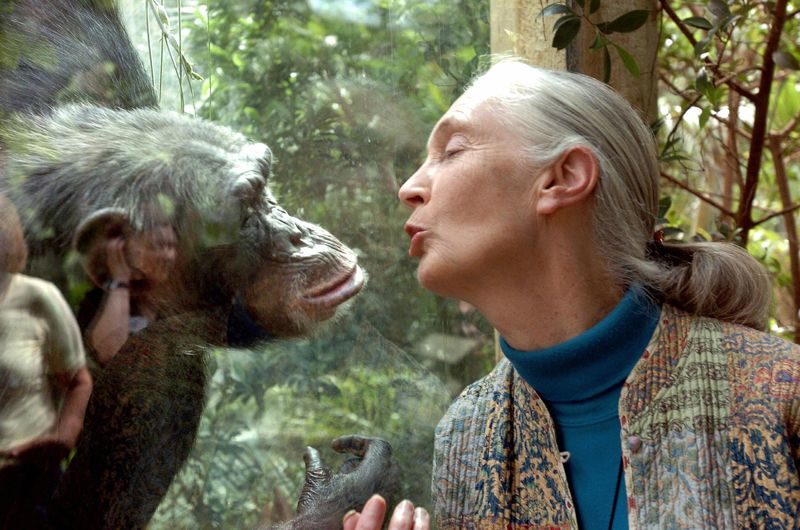
"The situation's a lot more complicated than the very clean story that has been making it into textbooks all this time," says Elizabeth Atkinson, a population geneticist at the Broad Institute of Harvard and MIT in Cambridge, Massachusetts, and a co-author of the paper, which was published on 2 August in Cell1.
Originally discovered in a family who had a history of profound speech and language disorders, FOXP2 was the first gene found to be involved in language production2. Later research touted its importance to the evolution of human language.
A key 2002 paper found that humans carry two mutations to FOXP2 not found in any other primates3. When the researchers looked at genetic variation surrounding these mutations, they found the signature of a 'selective sweep' - in which a beneficial mutation quickly becomes common across a population. This change to FOXP2 seemed to have happened in the past 200,000 years, the team reported in Nature. The paper has been cited hundreds of times in the scientific literature.
Older than expected
The idea that uniquely human changes to FOXP2 led to language development has not gone unchallenged. One study found that Neanderthals carried the same mutations4. This suggested that the modifications to FOXP2 happened before the two groups split, more than half a million years ago.
Despite such questions, the 2002 study has never been repeated. It was based on the genomes of only 20 individuals, including just a handful of people of African ancestry, says Atkinson: most came from Europe, Asia and other regions. She and her team have now re-examined the gene's evolutionary history using a larger data set and a more diverse population.
They found that the signal that had looked like a selective sweep in the 2002 study was probably a statistical artefact caused by lumping Africans together with Eurasians and other populations. With more - and more varied - genomes to study, the team was able to look for a selective sweep in FOXP2, separately, in Africans and non-Africans - but found no evidence in either.
"It's good that it is now clear there is actually no sweep signal at FOXP2," says evolutionary geneticist Wolfgang Enard of Ludwig Maximilian University of Munich in Germany, who was a co-author of the 2002 study.
Piece of the puzzle
Even if there was no recent evolution of FOXP2, there is still plenty of evidence that the gene is involved in language, says Simon Fisher, director of the Max Planck Institute for Psycholinguistics in Nijmegen, the Netherlands, and a coauthor of the 2002 study. Mutations in FOXP2 cause language disorders in humans, and in mice the gene is important for vocalizations and movement - both functions that are crucial to human speech.
Language is complicated, and was never going to be explained by a single mutation in modern humans, Fisher adds. "We need to embrace more-complex accounts that involve changes of multiple genes. In that sense, FOXP2 was only ever going to be one piece of a complex puzzle."
Brenna Henn, senior author of the latest paper and a population geneticist at the University of California, Davis, is now keen to revisit other genes that have been considered important to human evolution, such as one called Microcephalin, which has been linked to brain development. She worries that an over-reliance on small data sets has skewed our understanding of what makes humans unique.
"If you're asking a question about the evolution of humans as a species," says Atkinson, "you really do need to include a diverse set of people."
References
- Atkinson, E. et al. Cell 2018.06.048 (2018)
- Lai, C., Fisher, S. E., Hurst, J. A., Vargha-Khadem, F. & Monaco, A. P. Nature 413, 519-523 (2001).
- Enard, W. et al. Nature 418, 869-872 (2002).
- Krause, J. et al. Curr. Biol. 17, 1908-1912 (2007).



Reader Comments
ET influence on human development has no value other than entertainment and fantasy for 2 very fundamental reasons:
1) The long-term deleterious effects of weightlessness on carbon-based organics. Humans simply wither away when subjected to gravity-less conditions, and beyond a certain point, is nonrecoverable.
2) The distances involved between star systems and the horrendously large energy consumption required to traverse those distances within the lifetime of any human type life is ridiculous.
From all indications of the most ancient records, it seems quite probable there was outside influence on the human species. Yet conversely, there isn't slightest solid evidence that it happened. Just a lot of speculation without any substance. The notions of artificial gravity and limitless energy out of the "vacuum" of space are pipe dreams.